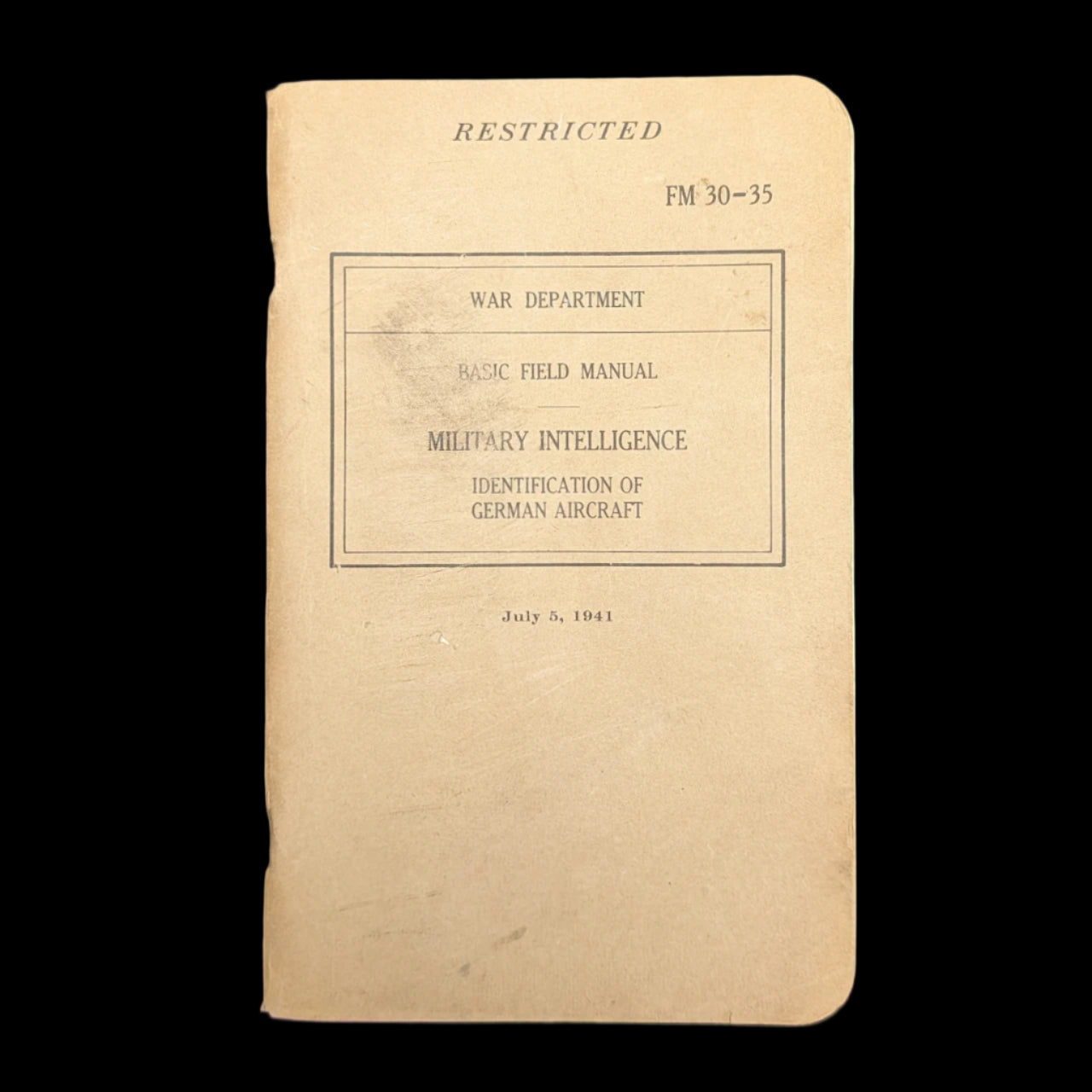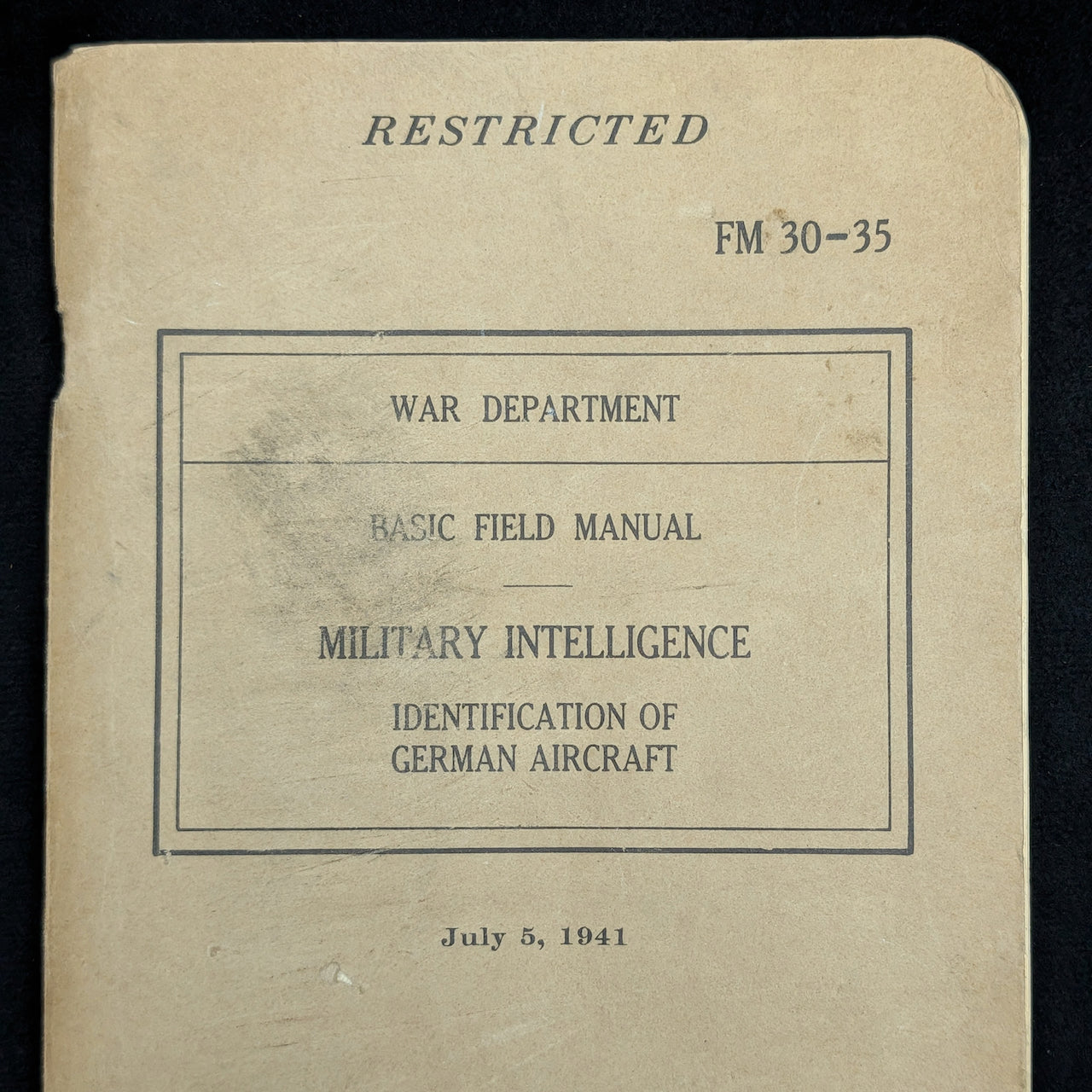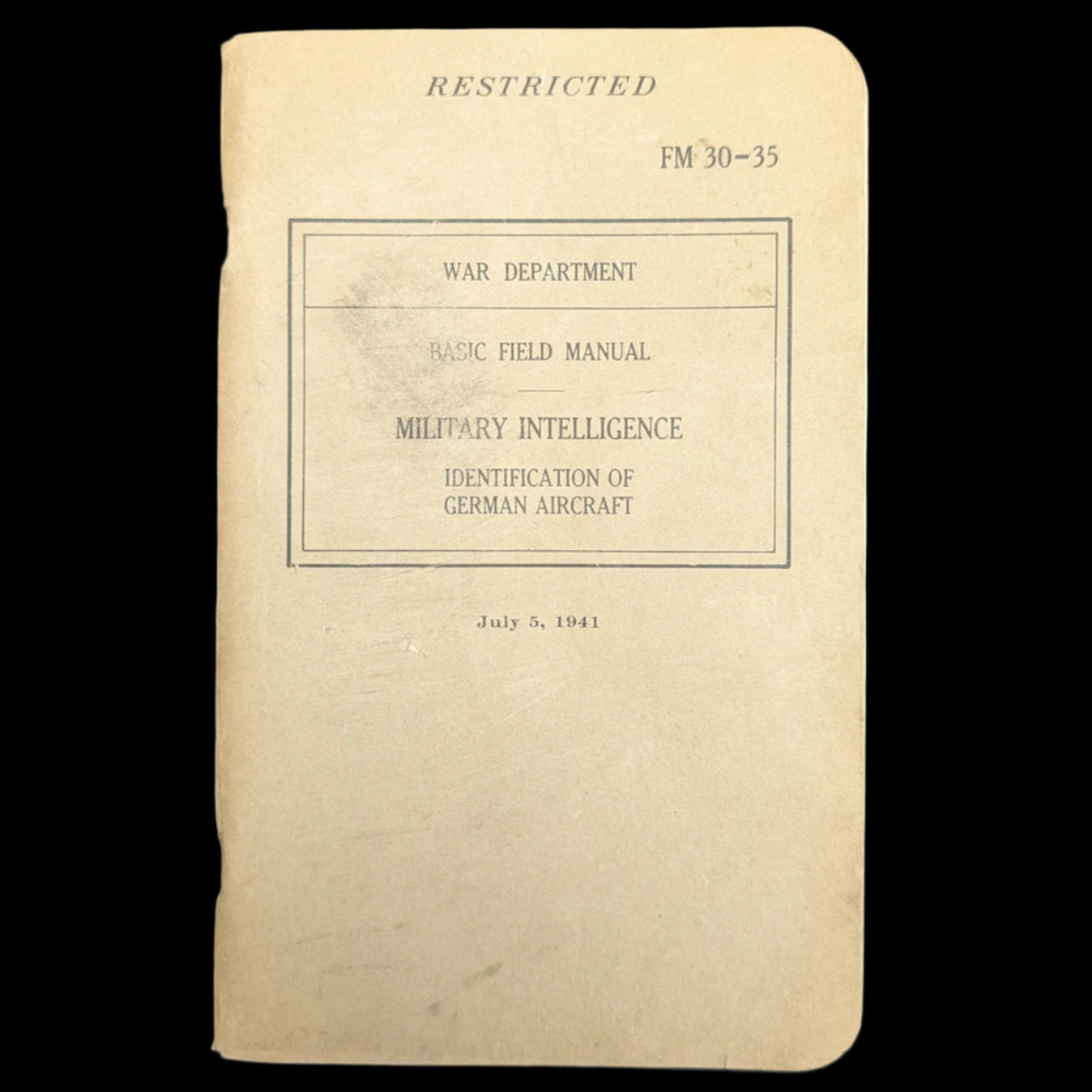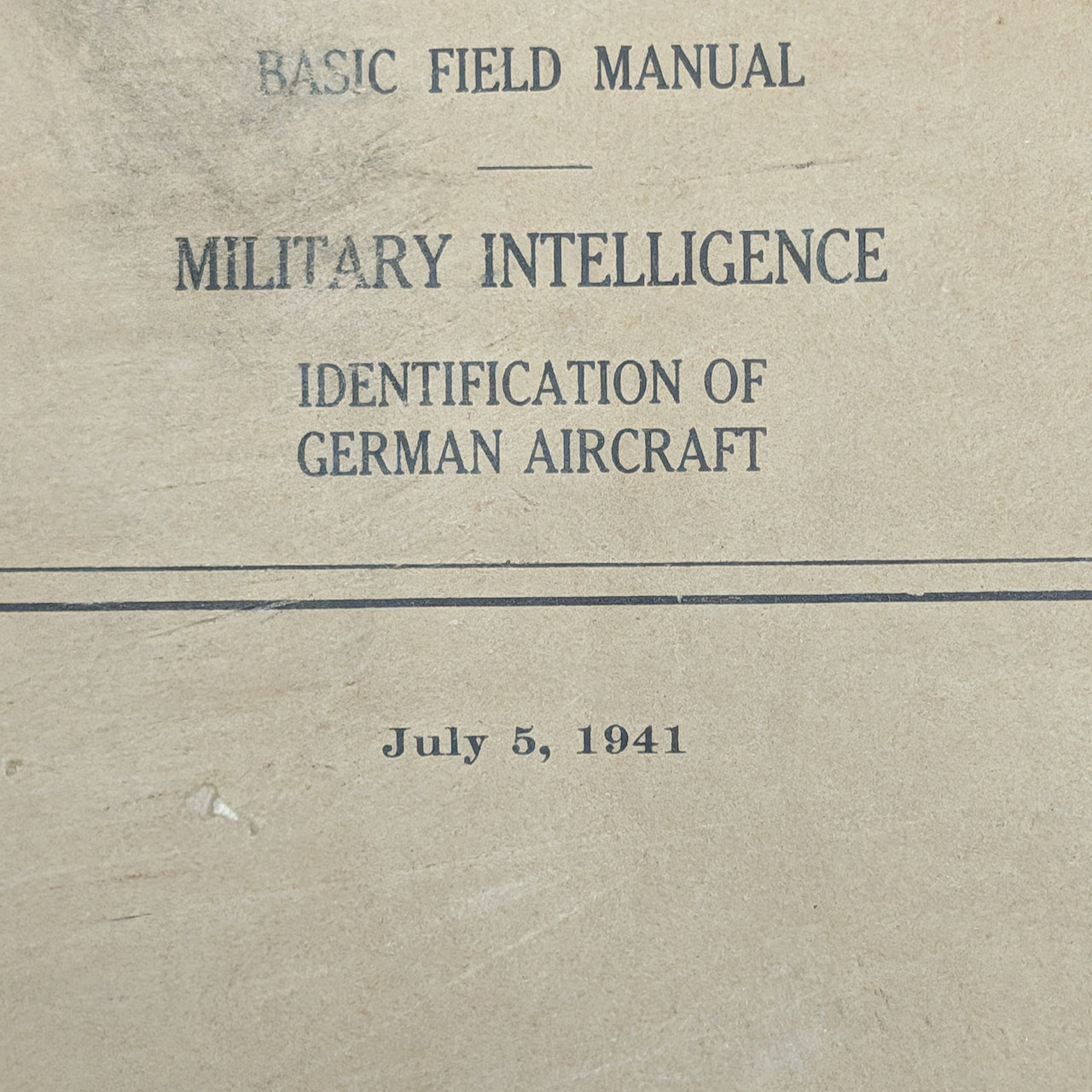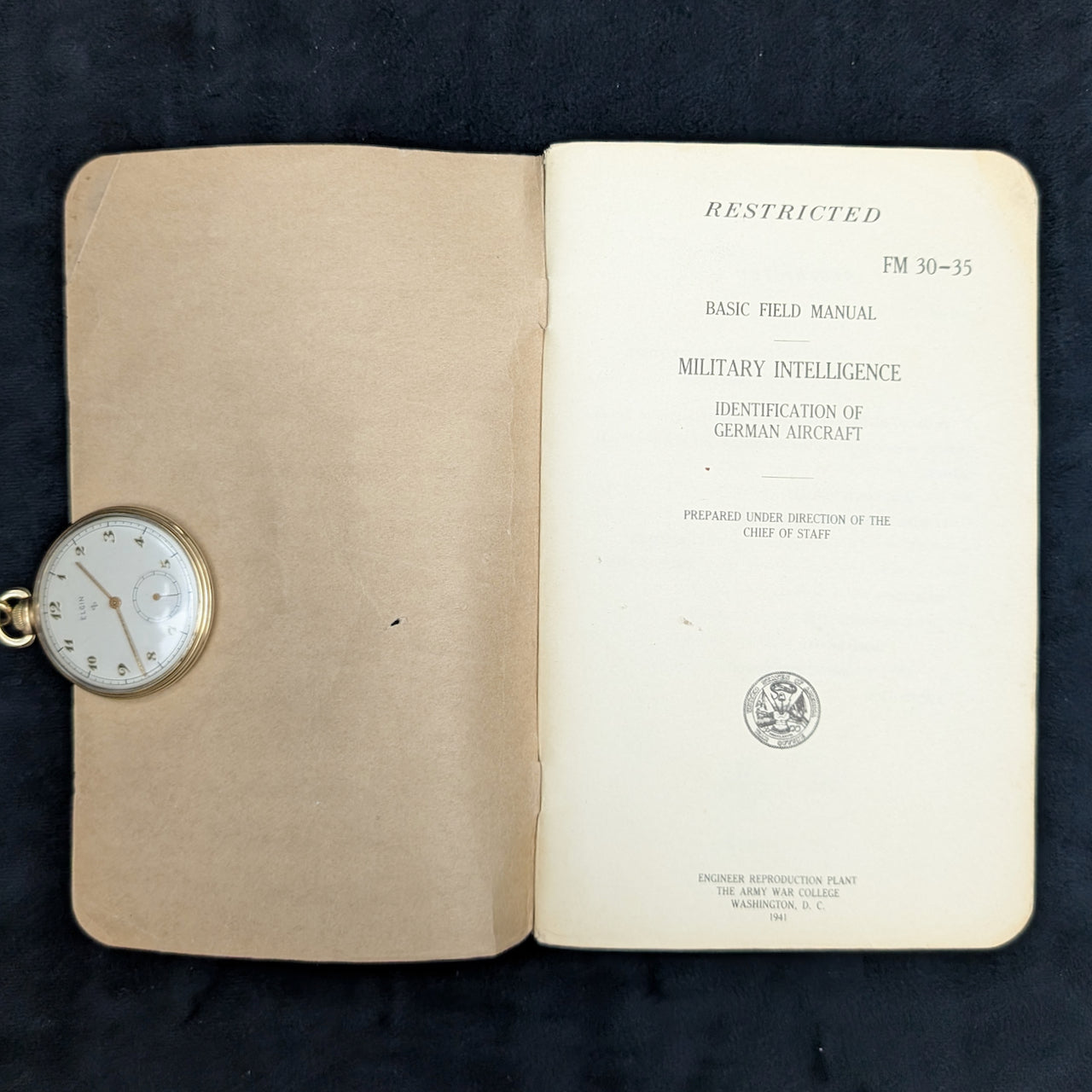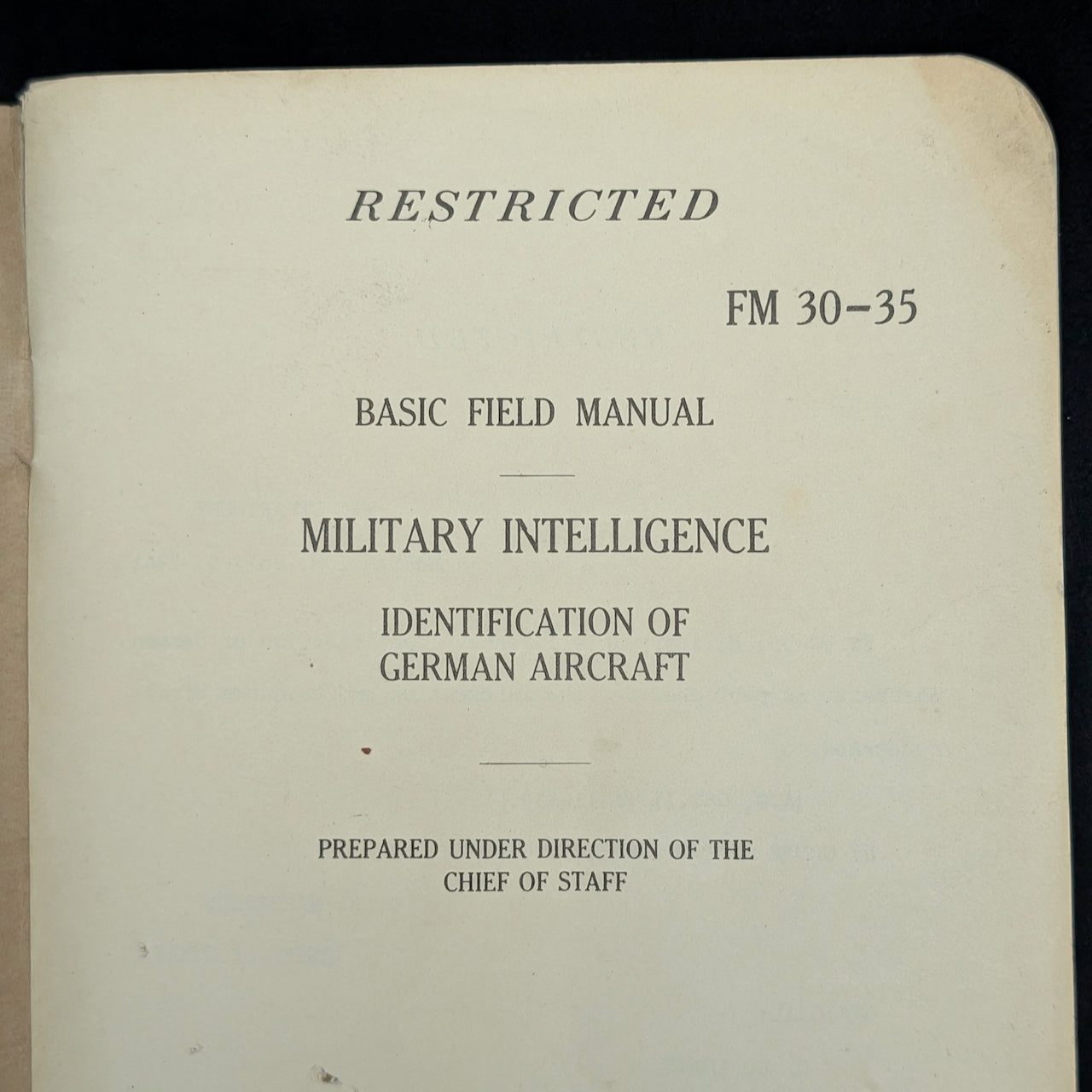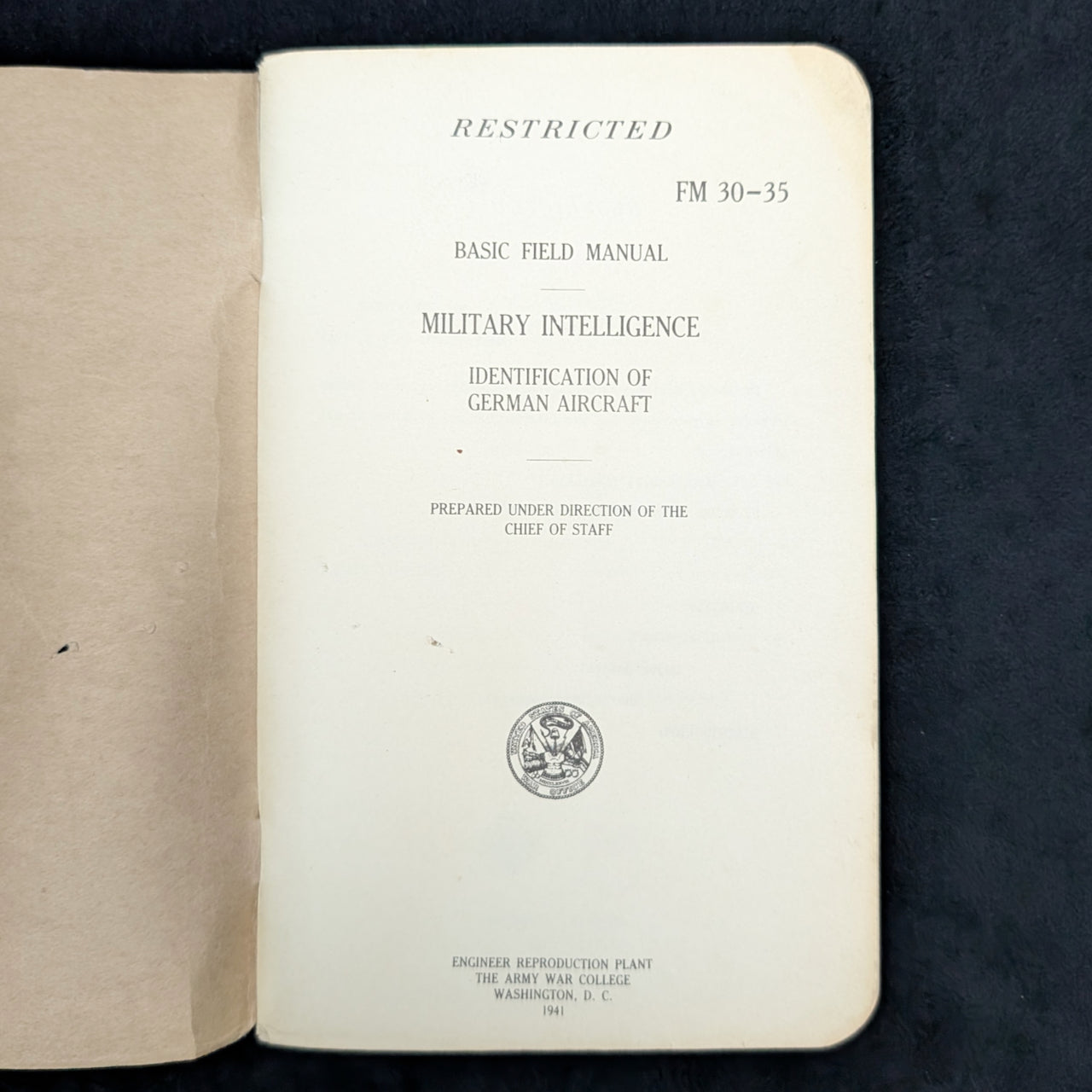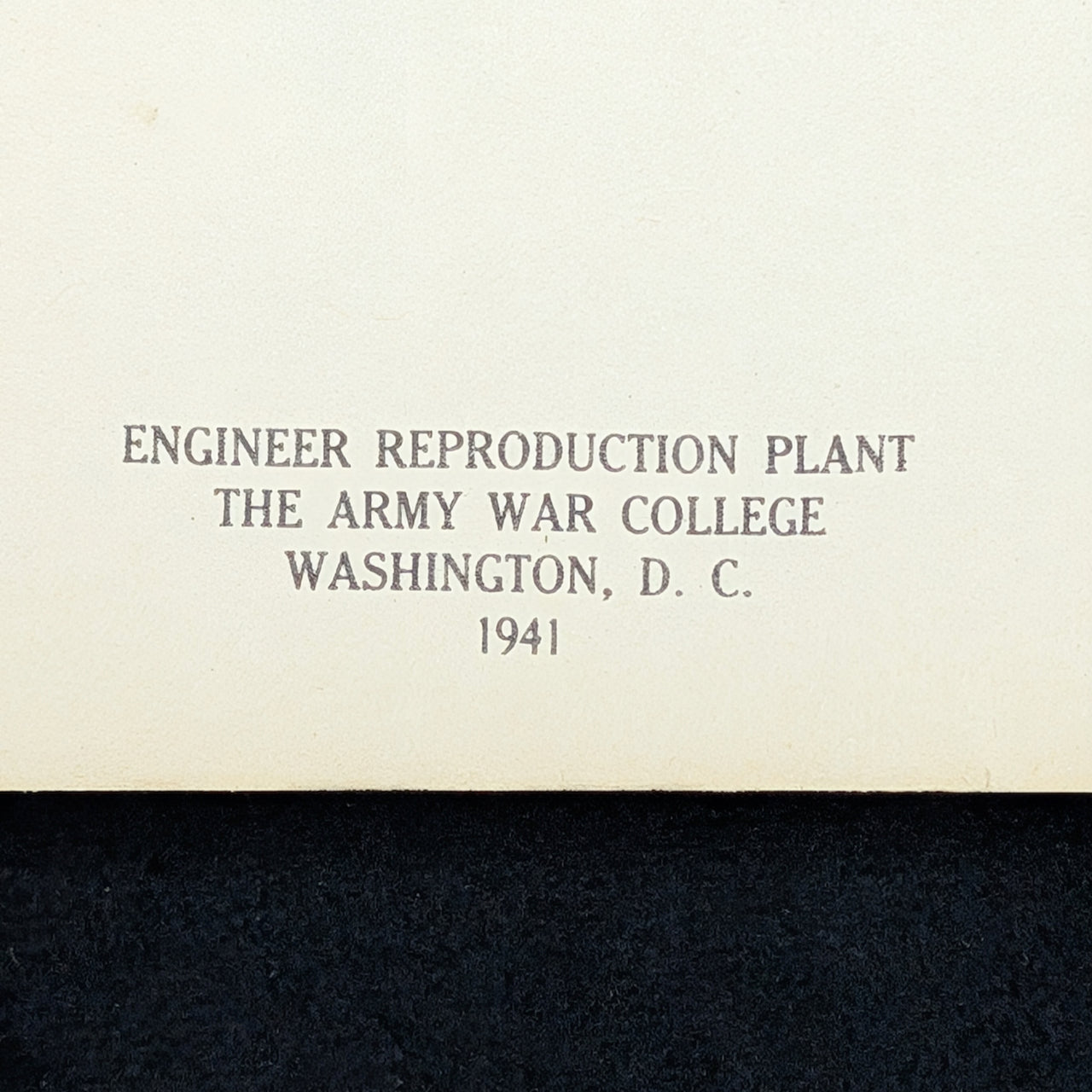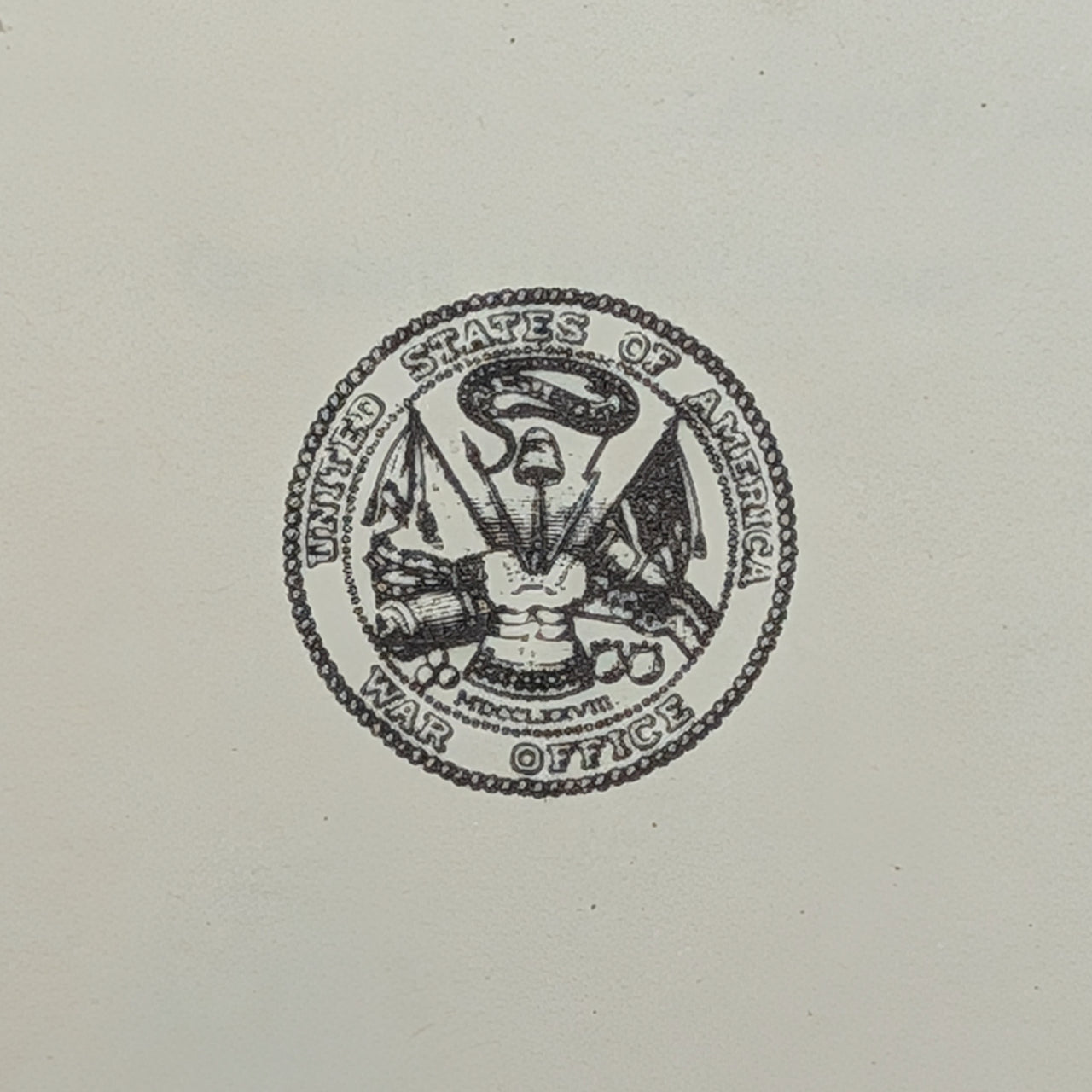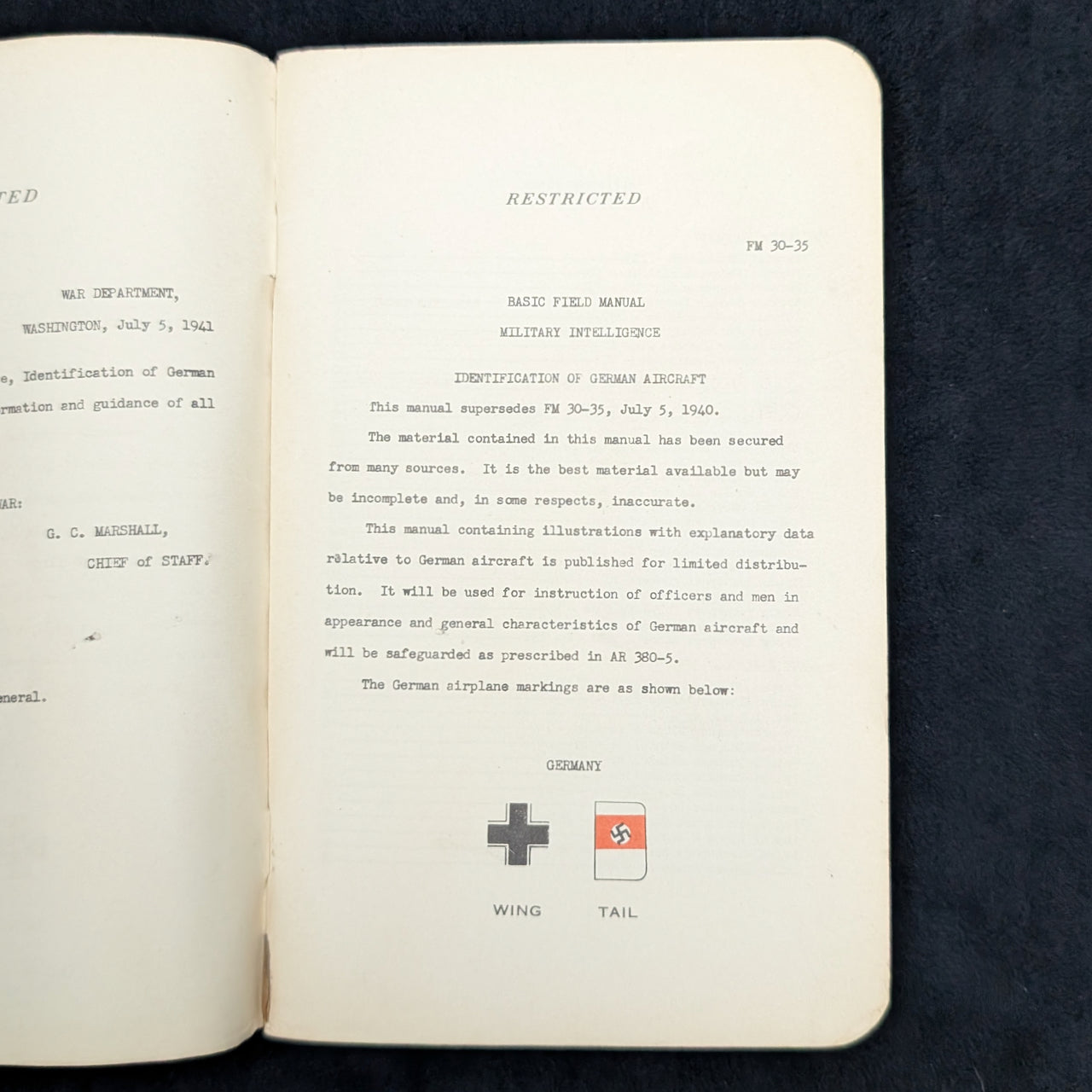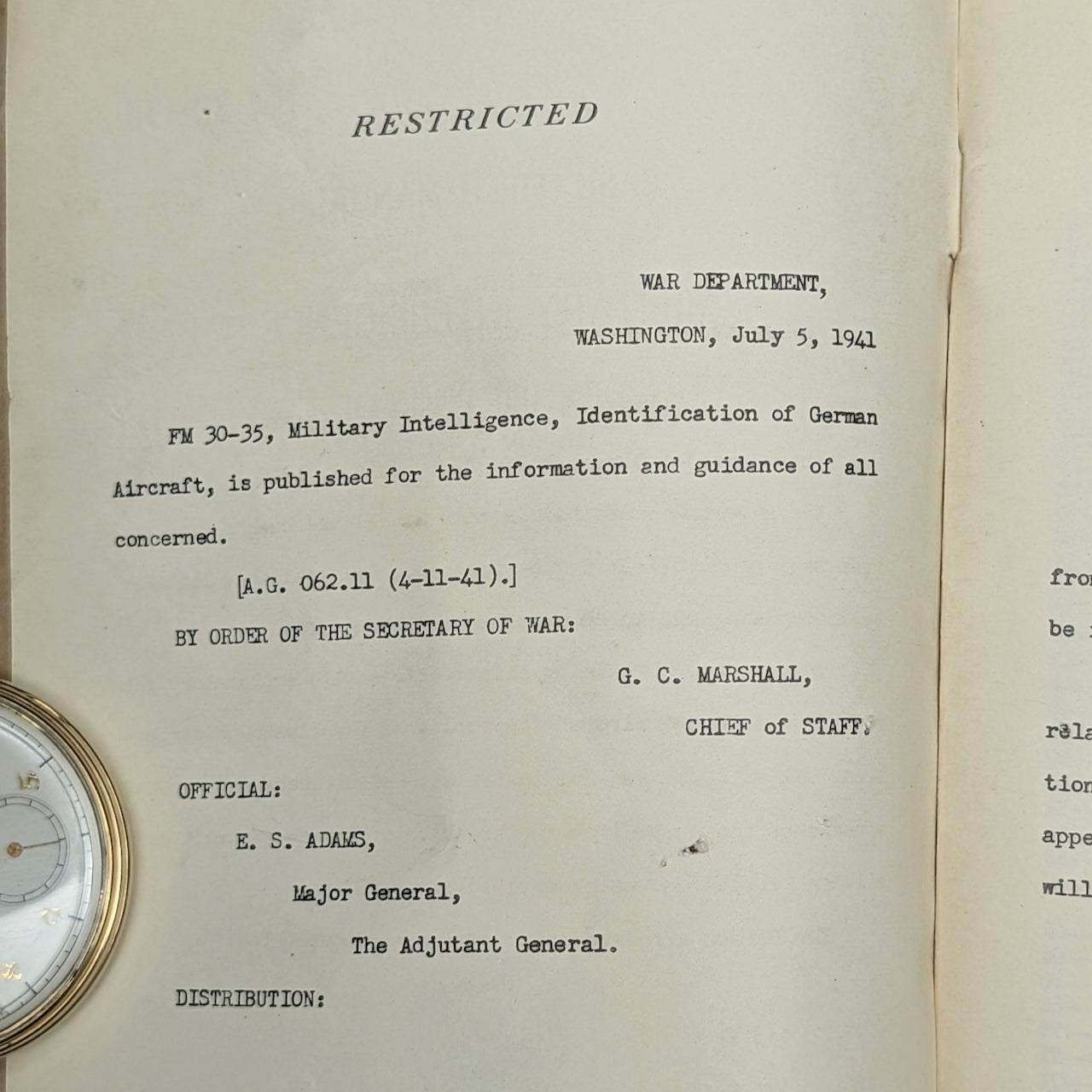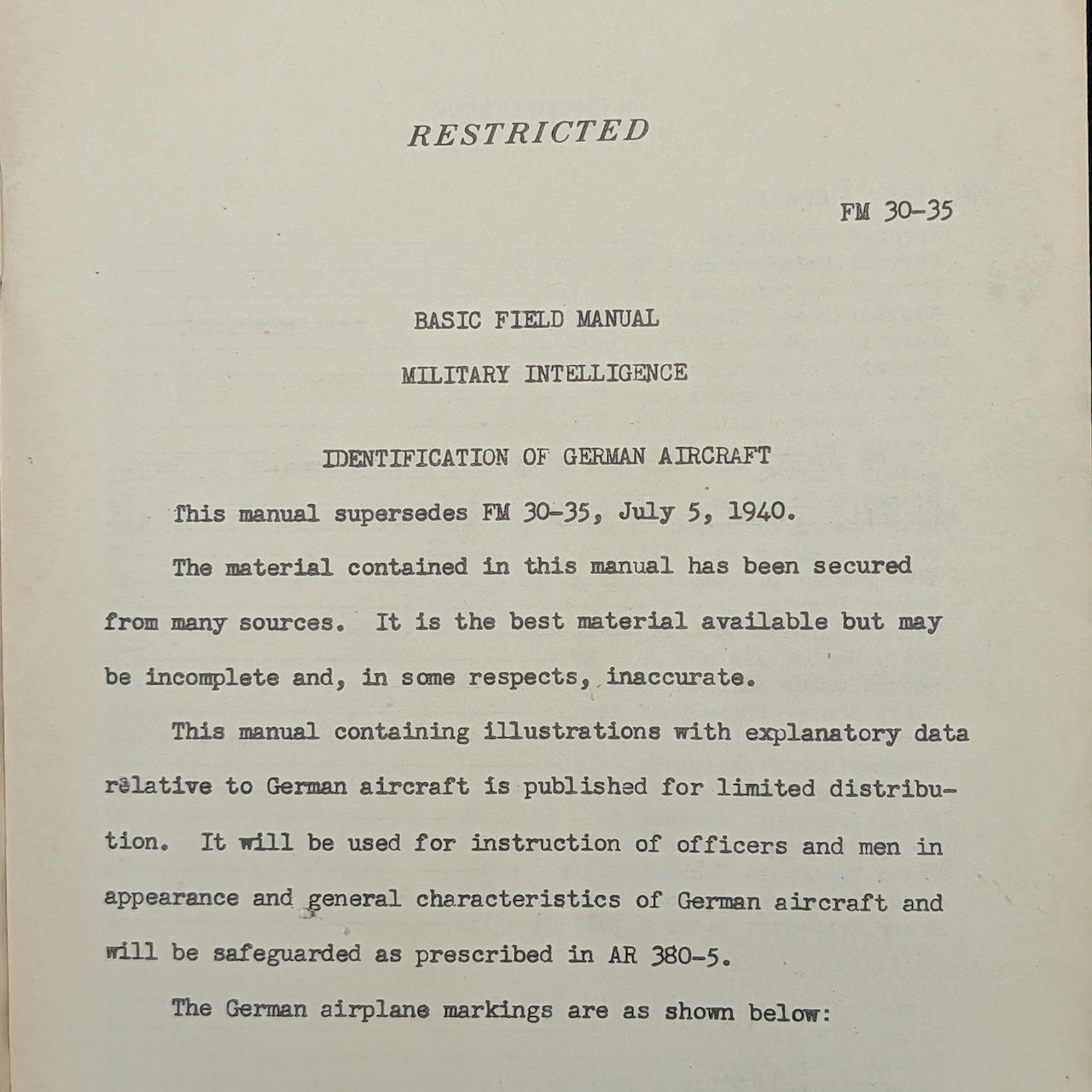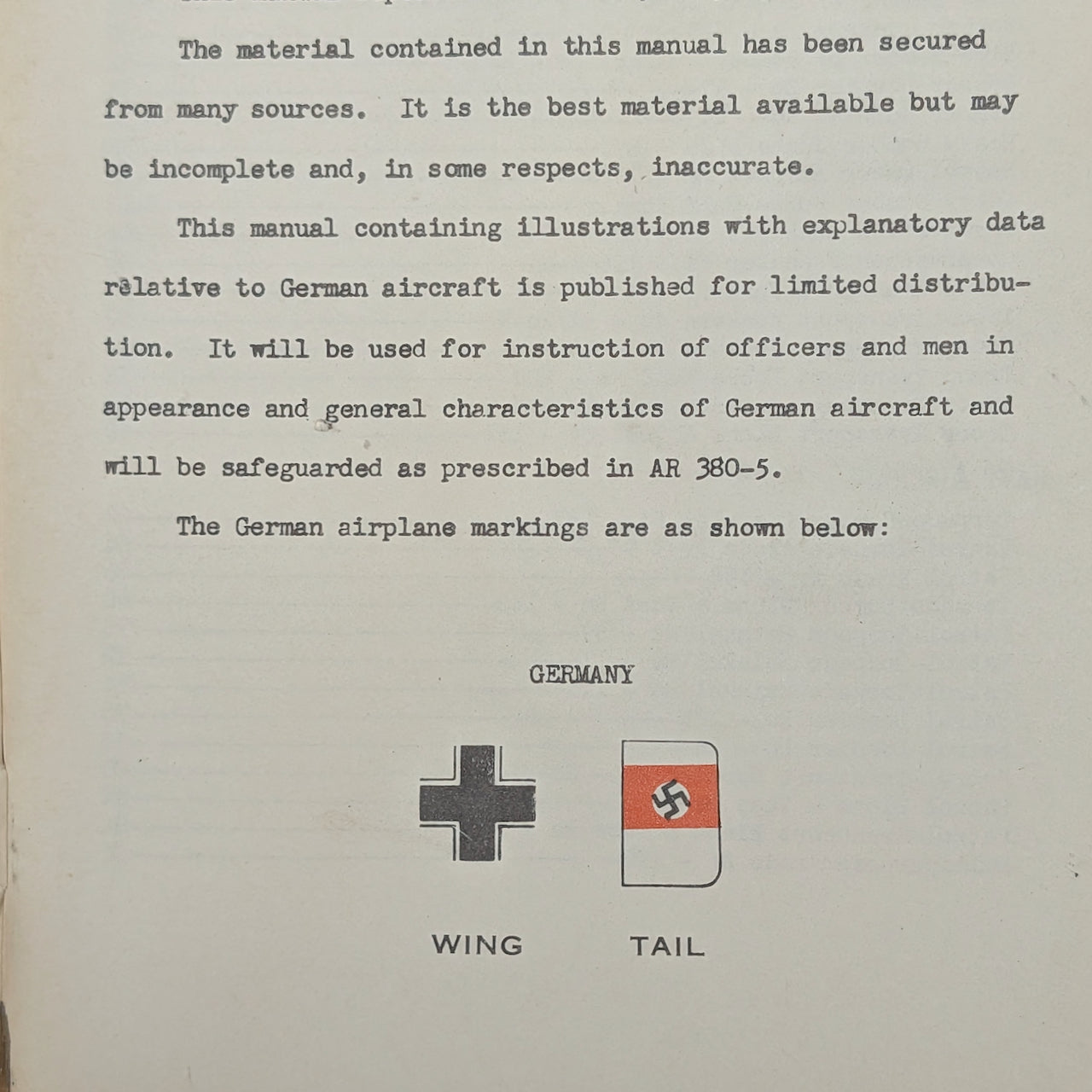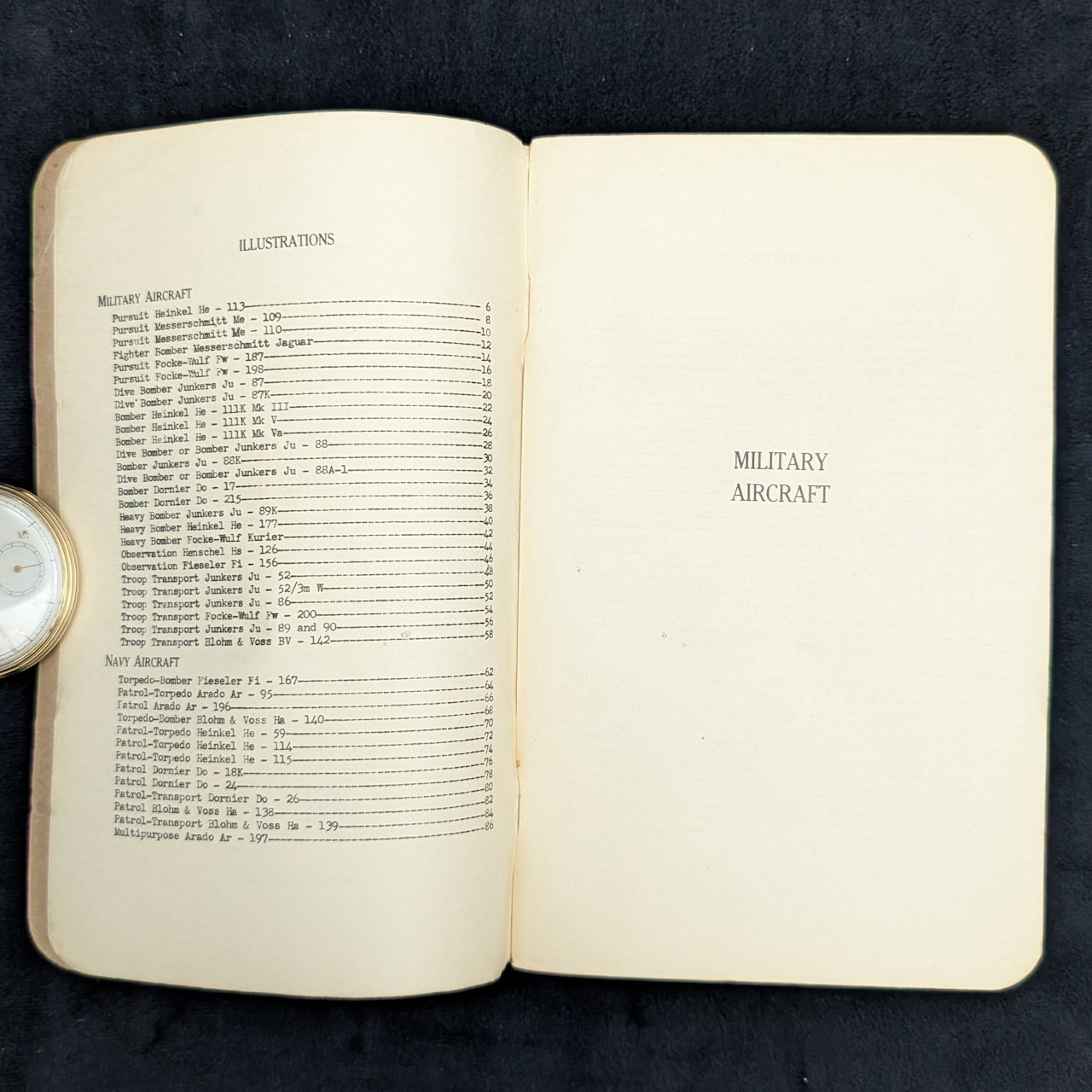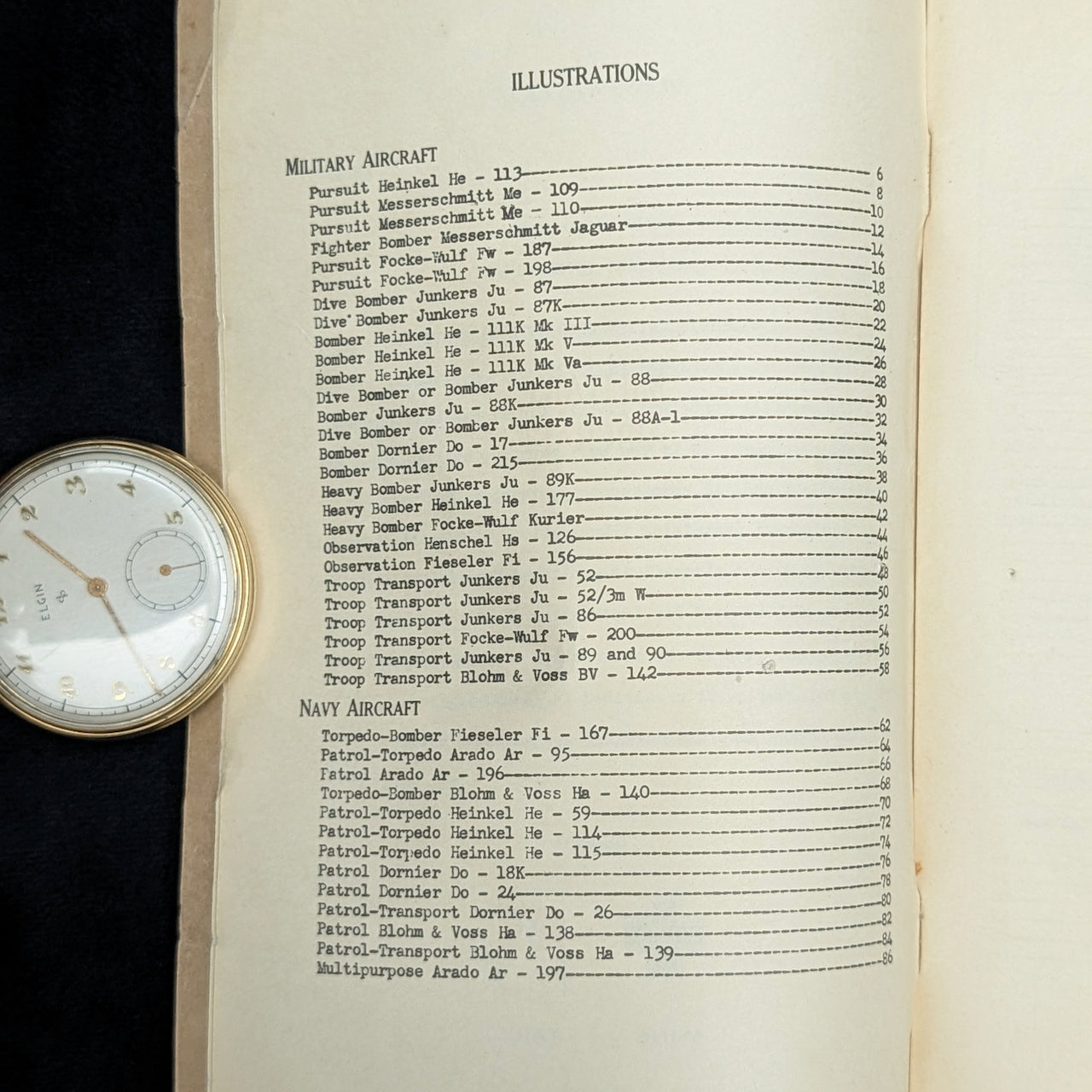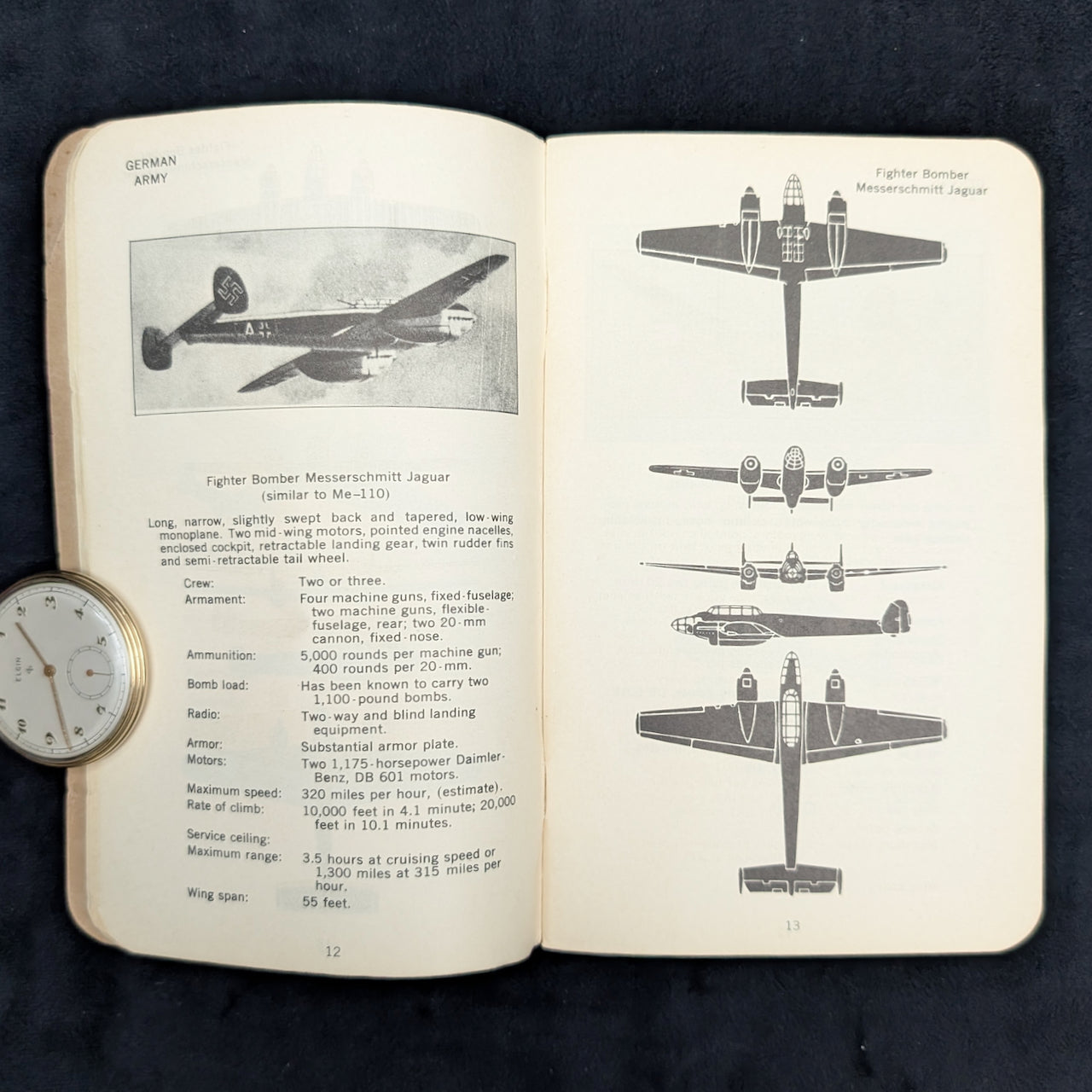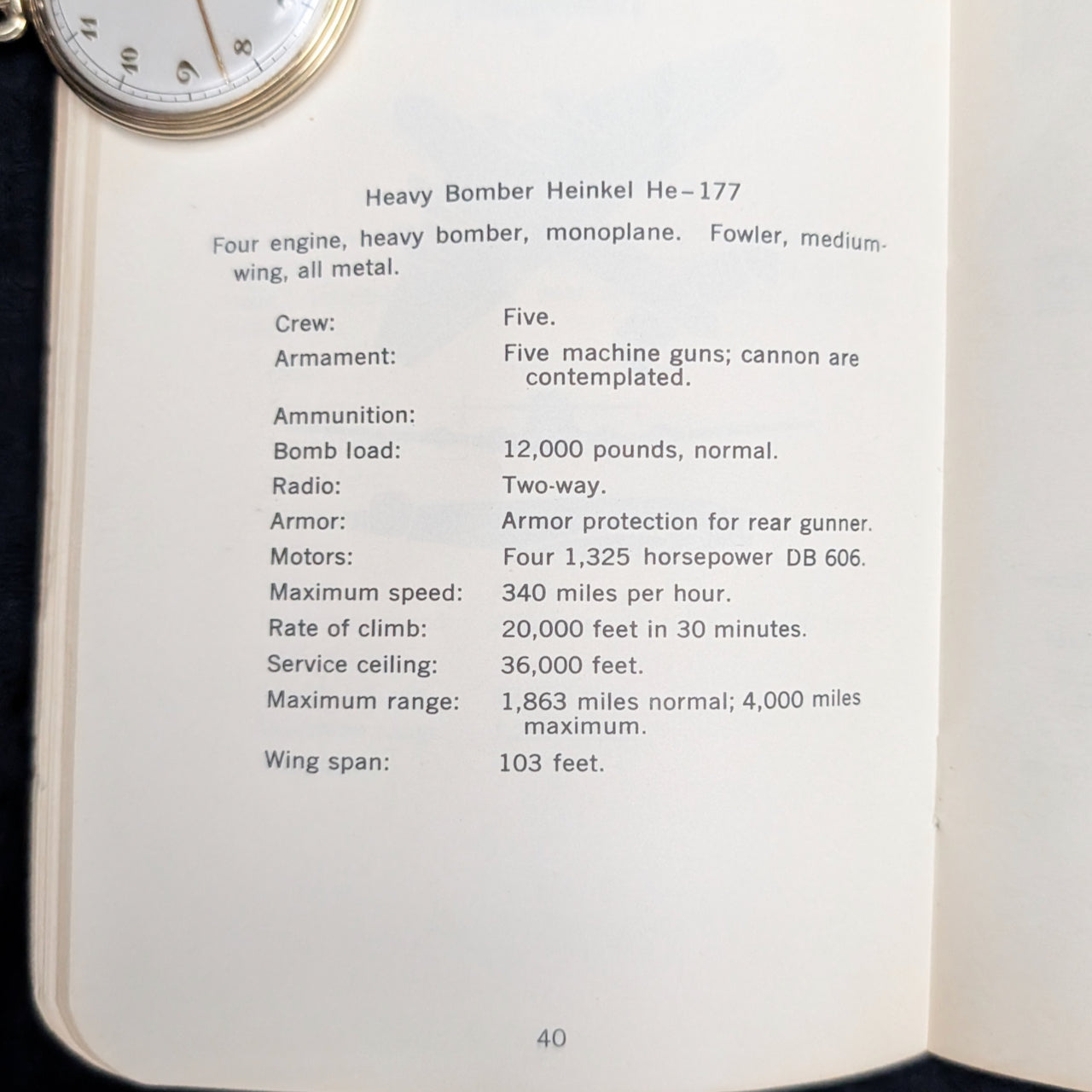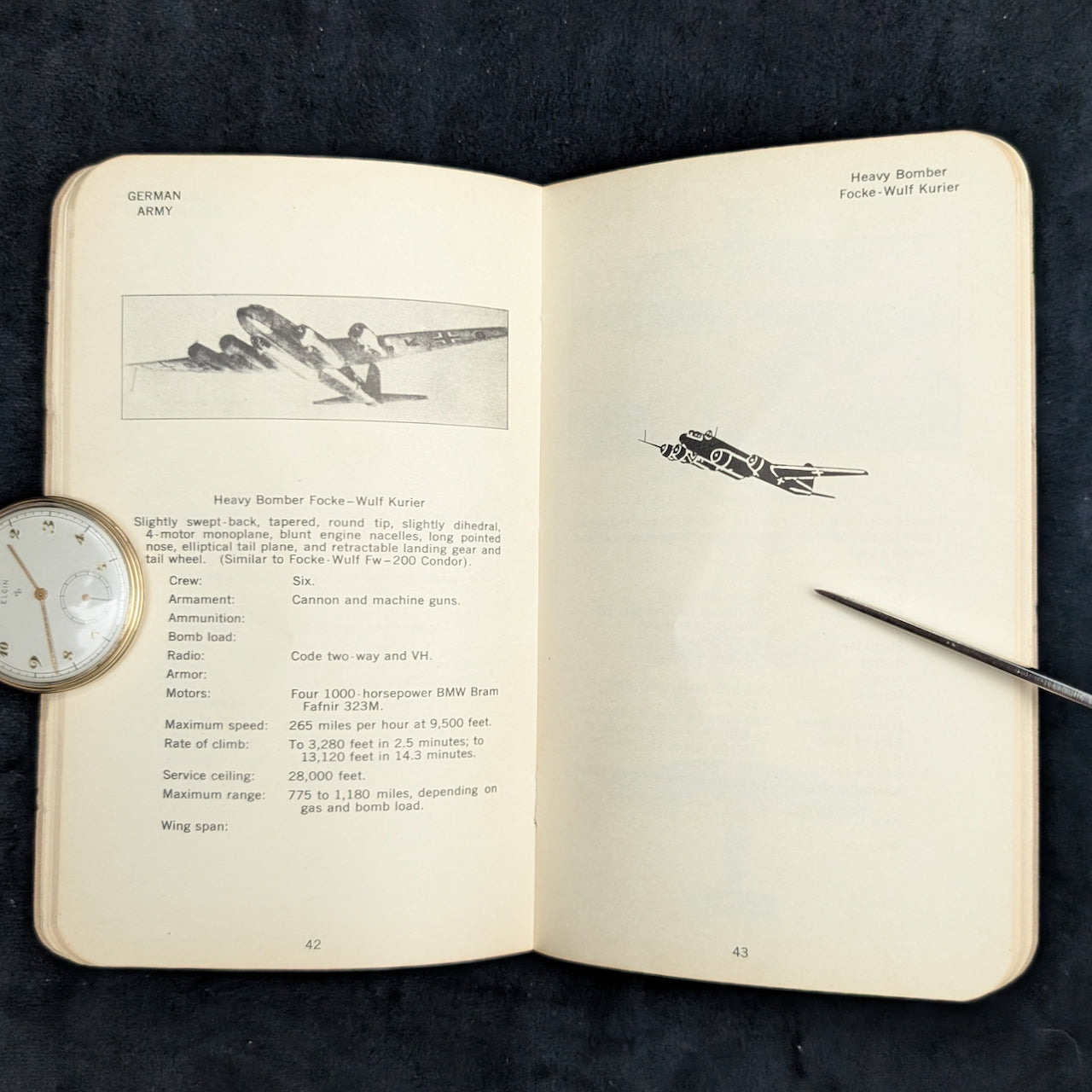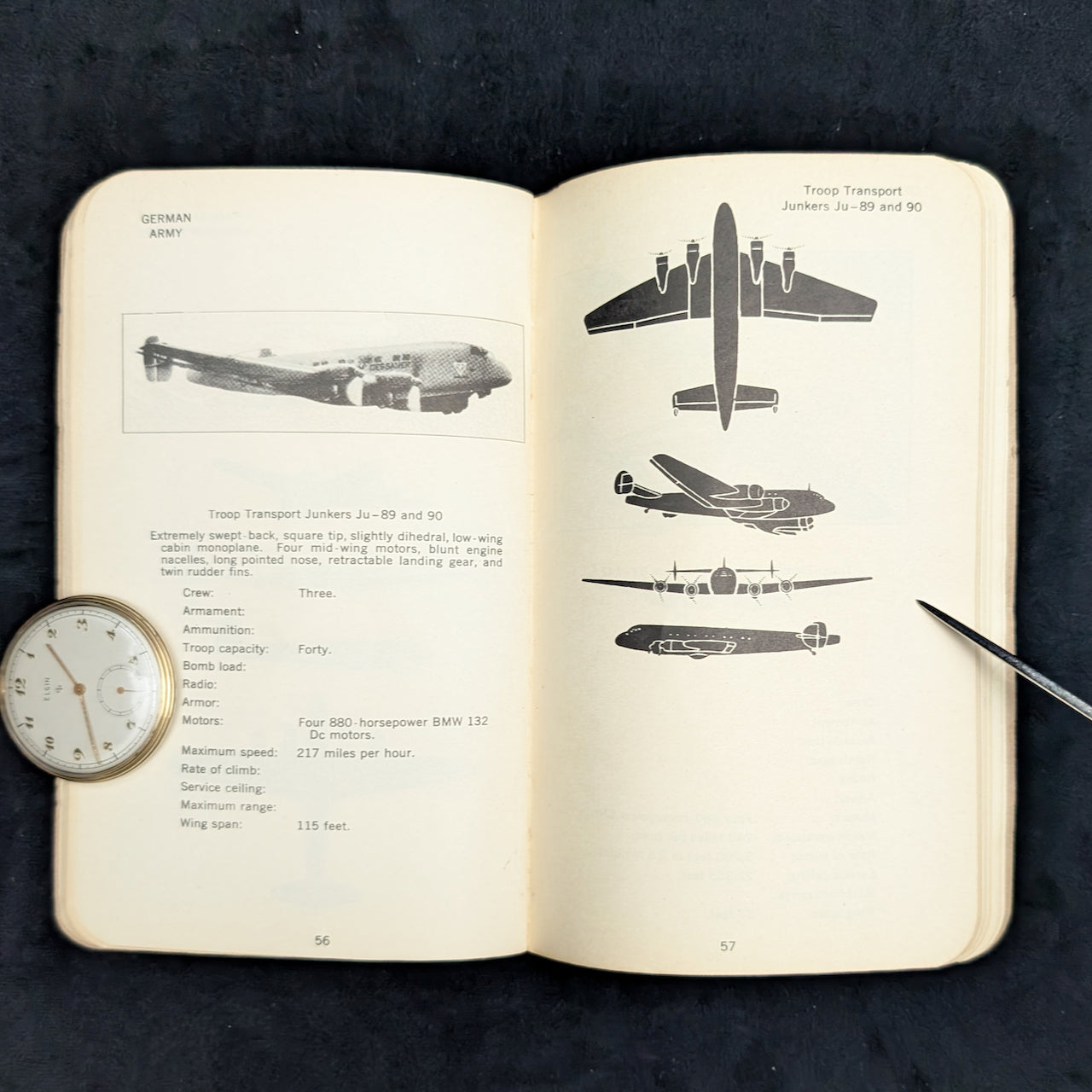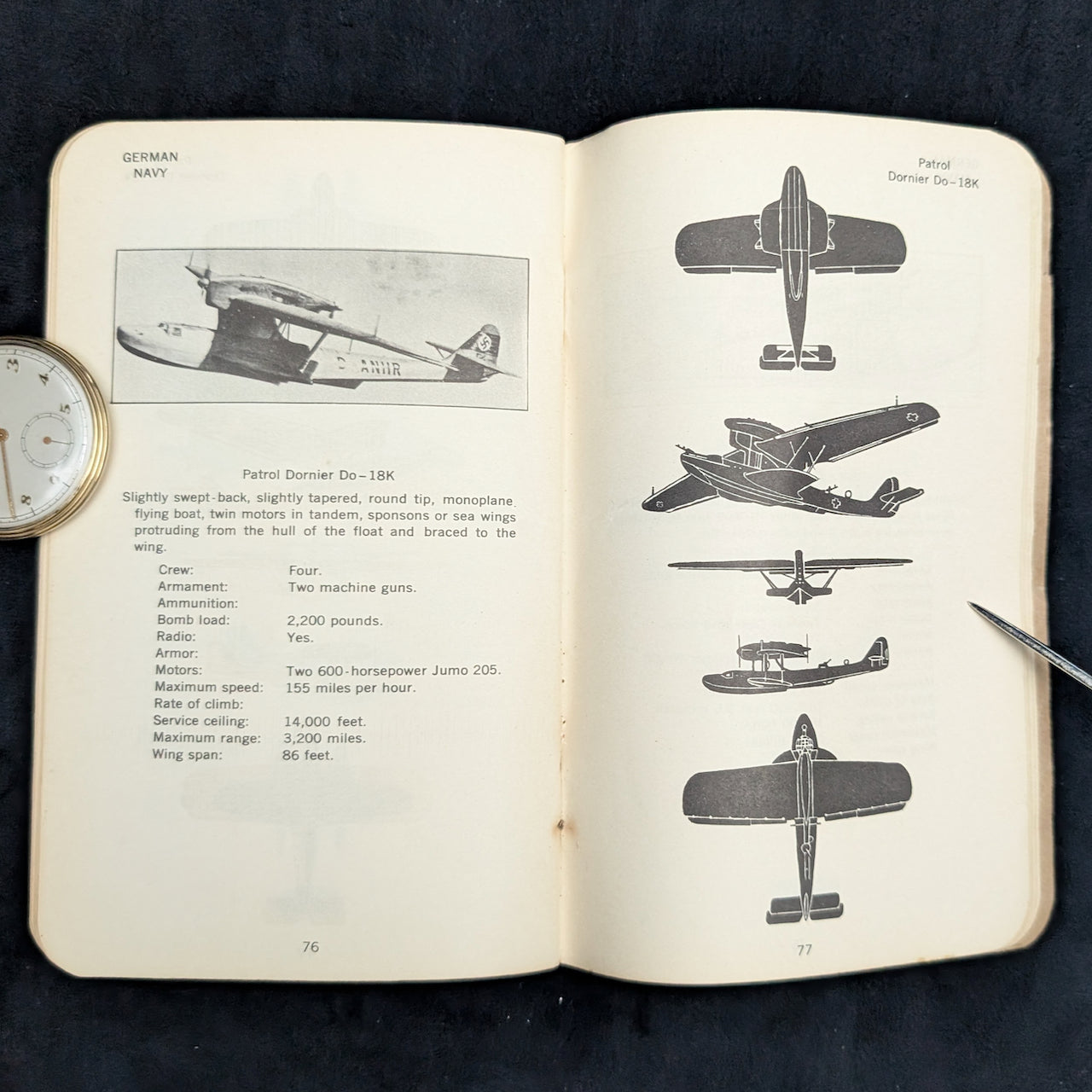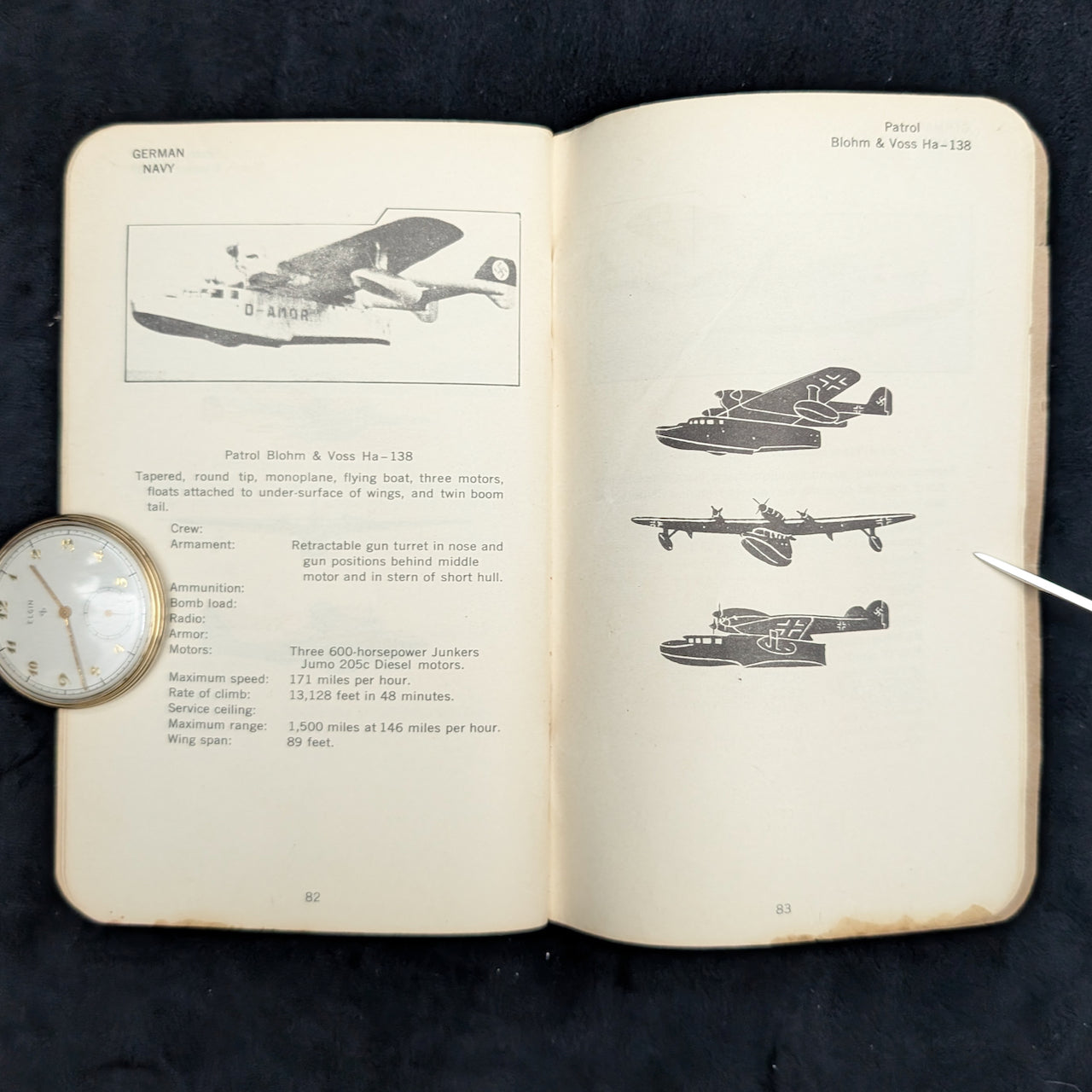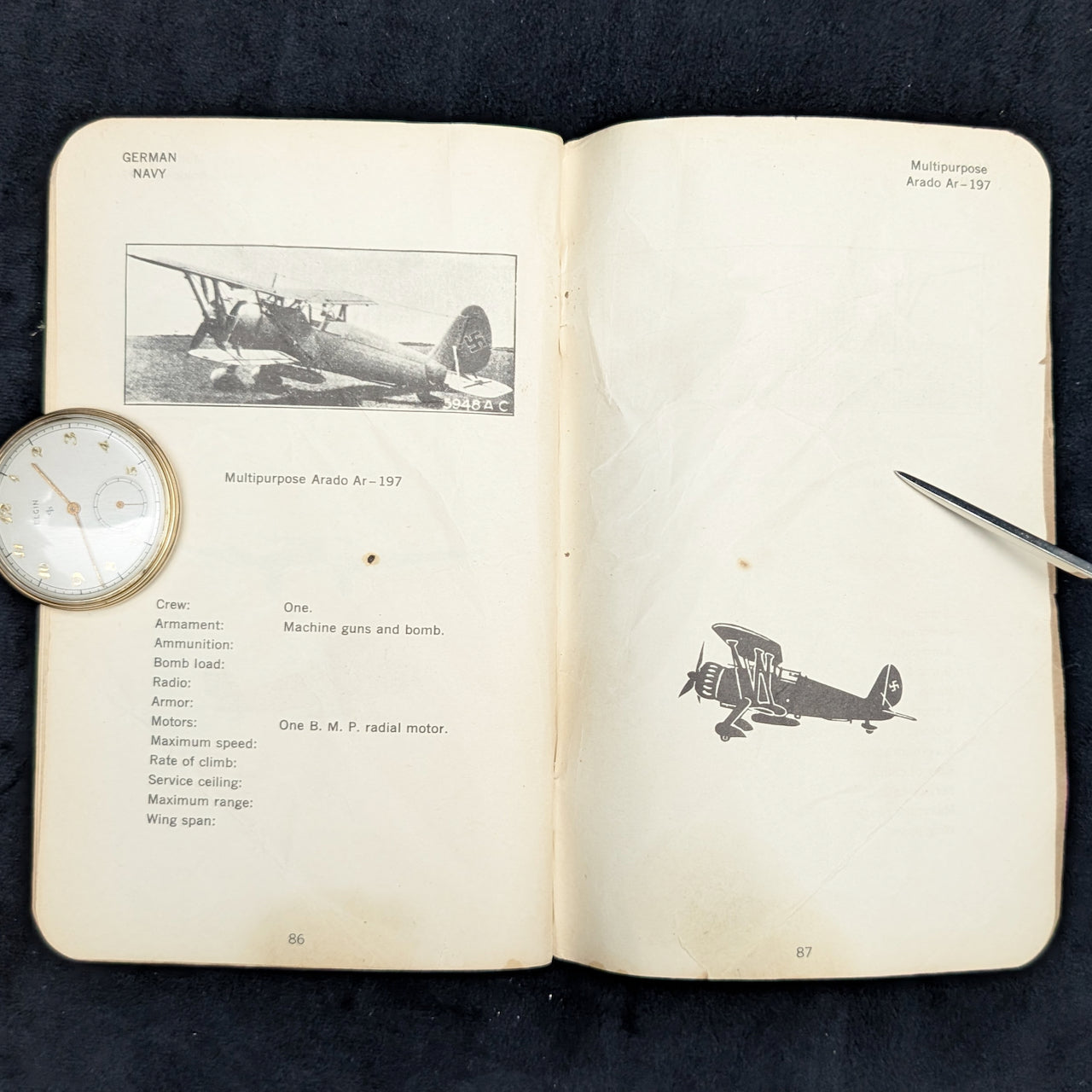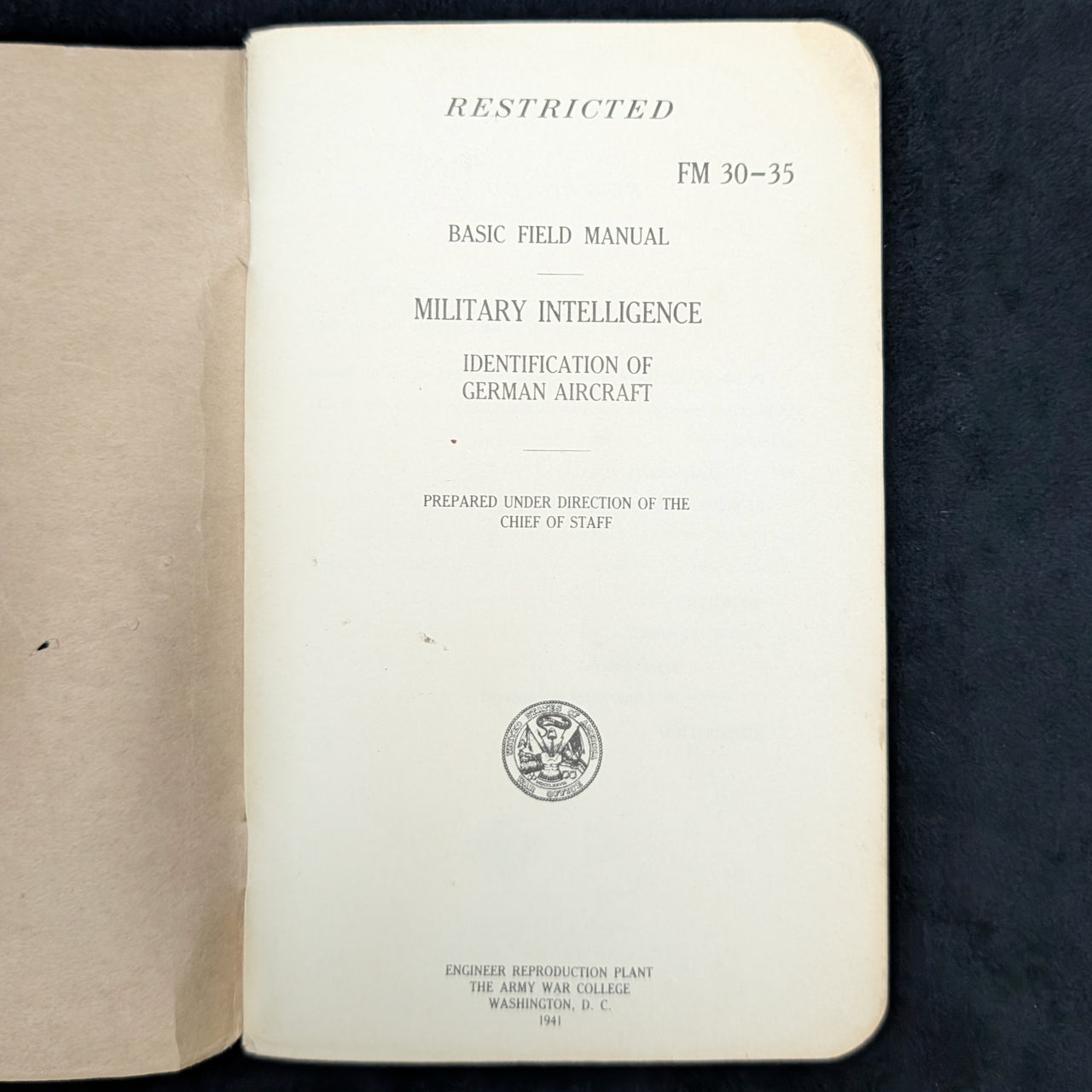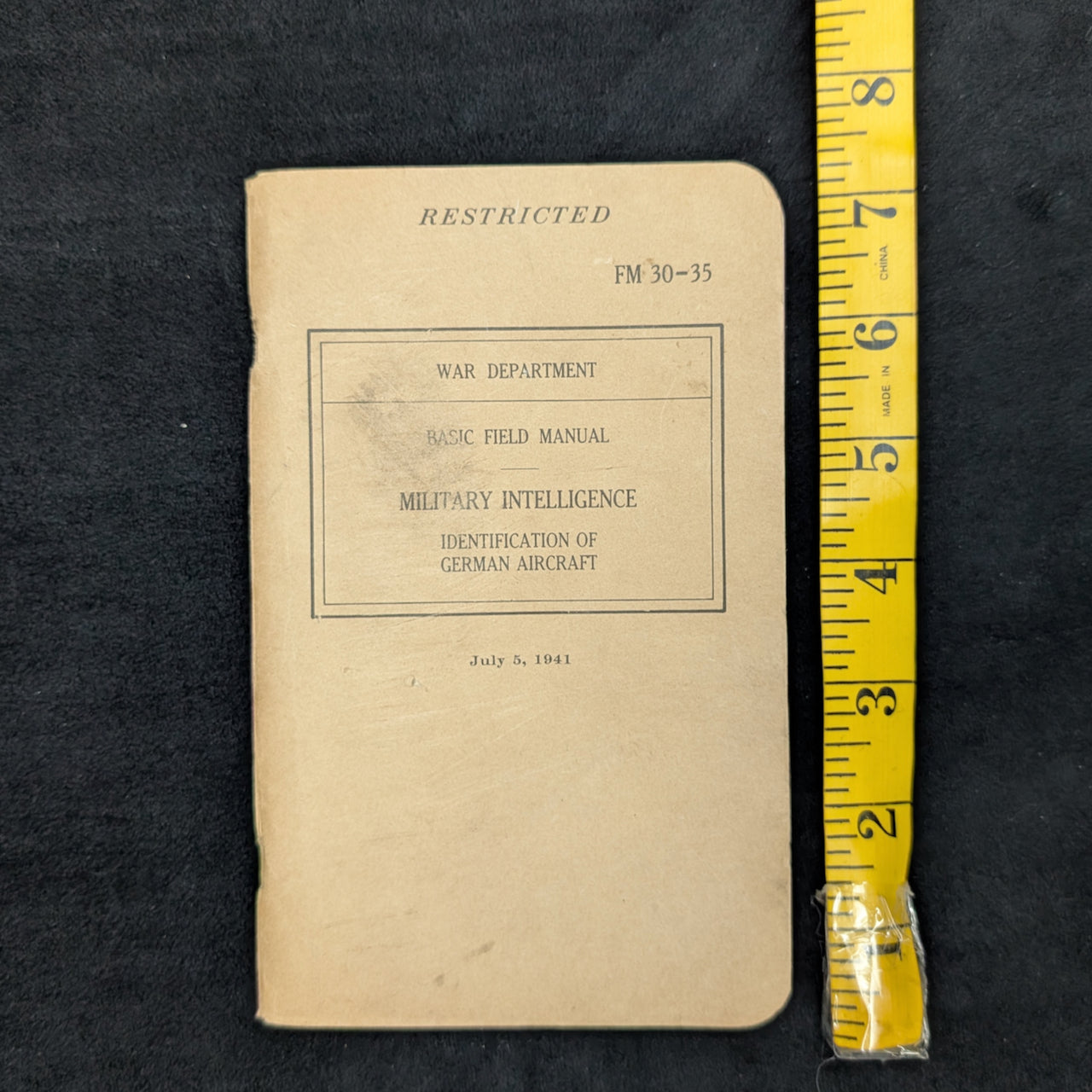
Basic Field Manual, FM 30-35, Identification of German Aircraft, 1941
Basic Field Manual, FM 30-35, Identification of German Aircraft, 1941
Couldn't load pickup availability
Basic Field Manual, RESTRICTED
FM 30-35
Military Intelligence
Identification Of German Aircraft
July 5, 1941
War Department
Basic Field Manual
Prepared Under Direction Of The Chief Of Staff
United States Of America War Office
Engineer Reproduction Plant
The Army War College
Washington, D.C.
1941
War Department, Washington, July 5, 1941
FM 30-35, Military Intelligence, Identification of German Aircraft, is published for the information and guidance of all concerned. [(A.G. 062.11 (4-11-41).]
This manual supersedes FM 30-35, July 5, 1940. The material contained in this manual has been secured from many sources. I is the best material available but may be incomplete and, in some respects, inaccurate. This manual containing illustrations with explanatory data relate to German aircraft is published for limited distribution.. It will be used for instruction of officers and men in appearance and general characteristics of German aircraft and will be safeguarded as prescribed in AR 380-5.
"Basic Field Manual, FM 30-35: Military Intelligence - Identification of German Aircraft," published by the War Department of the United States, is a military manual dated July 5, 1941, designed to instruct U.S. military personnel on how to identify German aircraft. This "RESTRICTED" document emphasizes its importance for military intelligence operations and the necessity to safeguard its contents. It supersedes a previous version (FM 30-35, July 5, 1940) and contains illustrations and explanatory data on the appearance and general characteristics of German aircraft. The manual explicitly states that the information within may be "incomplete and, in some respects, inaccurate," acknowledging the challenges of obtaining reliable intelligence during wartime and the rapid evolution of aircraft technology.
Author and Achievements:
While the manual itself is attributed to the United States of America War Office (specifically, the War Department), the authority for its publication rests with:
-
The Chief of Staff: The manual is "Prepared Under Direction Of The Chief Of Staff," indicating that the U.S. Army's highest-ranking officer at the time was responsible for its issuance.
It's crucial to understand that during this period (1941), the Chief of Staff was George Catlett Marshall.
Here's a summary of George C. Marshall's key achievements:
- Modernizing the U.S. Army: Marshall played a pivotal role in expanding and modernizing the U.S. Army before and during World War II, transforming it into a formidable fighting force.
- Strategic Planning: He was the principal architect of American military strategy during the war, working closely with President Franklin D. Roosevelt and other Allied leaders.
- Leadership and Diplomacy: Marshall possessed exceptional leadership qualities, characterized by his integrity, his ability to work effectively with diverse personalities, and his focus on strategic objectives.
- The Marshall Plan: After the war, as Secretary of State, he devised the Marshall Plan, a massive economic aid program that helped rebuild Western Europe and prevent the spread of communism. This earned him the Nobel Peace Prize.
While Marshall didn't personally write the manual, his approval and direction were essential for its publication and distribution. The manual reflects the military's need for accurate intelligence during a time of global conflict, and its issuance under the Chief of Staff's authority underscores its importance for the U.S. war effort.
Please review each photo carefully for wear and usage. This item came from a local estate sale and was in the previous owner's home office for many years. Send me a message if you have questions or would like additional photos.
